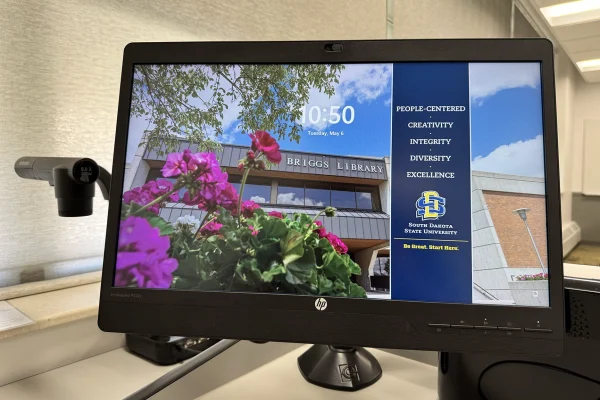Examining the peer institutions of SDSU
October 23, 2012
Earlier this semester during the Chick-fil-A debate on campus, one of the commonly used phrases was “peer institutions.”
An important phrase, because yes, as a place of higher education, there are others like SDSU. Of the other places with a Chick-fil-A nearby, the University of Minnesota-Twin Cities was one that was cited as a “peer institution.”
There’s not really any way to justify the University of Minnesota-Twin Cities as a peer institution. It has 50,000 students and is located in a metropolitan area of more than 3 million people. SDSU has more than 12,000 students and is surrounded by wind turbines.
So what exactly are we talking about when it comes to peer institutions?
I decided to conduct my own research into which of these schools is most like the Jackrabbits when it comes to educational values. However, SDSU actually has a list of peer institutions for us all to reference.
On SDSU’s website, the school lists its peer institutions as the 12 following universities: Colorado State, Idaho, Kansas State, Montana, Montana State, New Mexico State, North Dakota, North Dakota State, Oklahoma State, Southern Illinois University-Carbondale, Utah State and Wyoming.
Of the 12, nine of those schools are land grant institutions, with Montana, North Dakota and SIU-Carbondale as outliers. Clearly, SDSU’s land-grant history drives the way things are done here — and rightly so. The school has an agricultural tradition worth keeping up.
All of the peer institutions are also Division I schools, which makes sense. There’s no point in comparing yourself to Division II schools anymore, especially when you’re trying to shed that label and build yourself as a research institution. Minnesota State-Mankato has a Chick-fil-A but they’re Division II, and SDSU and MSU don’t really share goals anymore outside of giving students a good education.
You’ll notice that the University of South Dakota is not among the 12 listed above. It’s not to say USD isn’t a worthwhile school but rather that the Coyotes have a different focus. USD has the law and medical schools, while SDSU churns out the engineers, pharmacists and journalists. (You better believe I went there.)
In the list of 12 peers, I do take issues with a few of them.
Both New Mexico State and Utah State are on the list. Aside from both being nicknamed the Aggies, both are in mountainous regions of the United States and are a far cry from anything related to the Dakotas. SDSU’s alumni are just wrapping up a $200 million fundraising drive; Utah State has conducted a $400 million drive in recent history. It’s a similar story when it comes to Colorado State, which spent $330 million in research in 2011, the second-most nationally at public non-med schools only behind Georgia Tech.
Oklahoma State is like a small city compared to SDSU. If only SDSU had its own T. Boone Pickens to give $500 million to the university, the university would be golden.
There are some surprising parallels between SDSU and the University of Idaho. Both would be deemed “rural” institutions, as Moscow is nearly the same size as Brookings at 23,800 residents. In both states, the university would be considered to be a top dog when it comes to performing agricultural and engineering research. SDSU and Idaho also put a strong emphasis on their natural resource programs. Finally, as the sign of a truly great university, Idaho also has an Einstein Bros. Bagels franchise.
As a university, we have the most things alike with NDSU and Southern Illinois with similar endowments and enrollments, and the three are alike on the athletic fields of play as well. The Jacks and Bison are bitter rivals in the Summit League, and all three schools are battling for the conference lead in the Missouri Valley Football Conference at the moment.
Memories are sometimes short, and it’s worth reminding ourselves that it was less than a decade ago when SDSU was Division II and kicking around a move up — an idea which seemed to be simply preposterous. Aside from the Bison, every one of these schools have been in Division I for several decades.
Simply put, SDSU has a ways to go to be like the other schools listed.
That said, I applaud SDSU’s effort to become more like the Kansas States and Oklahoma States, even if it’s a 50-year pipe dream. Those schools are the ones pointed to when it comes to agricultural and rural research.
There’s no reason SDSU can’t eventually be the same way.
Marcus Traxler is the Managing Editor at the Collegian. He can be emailed at mtraxler@sdsucollegian.com.





















